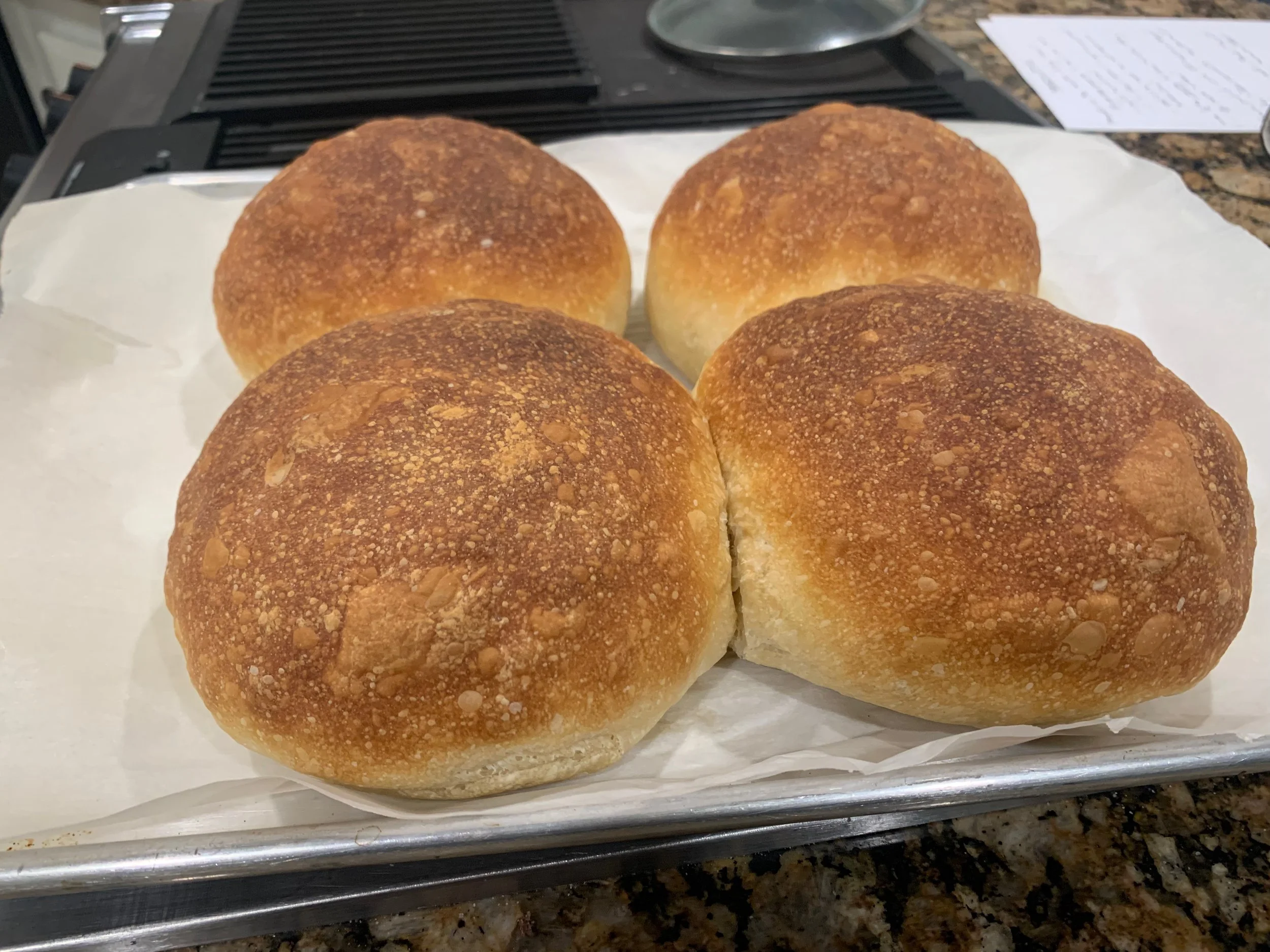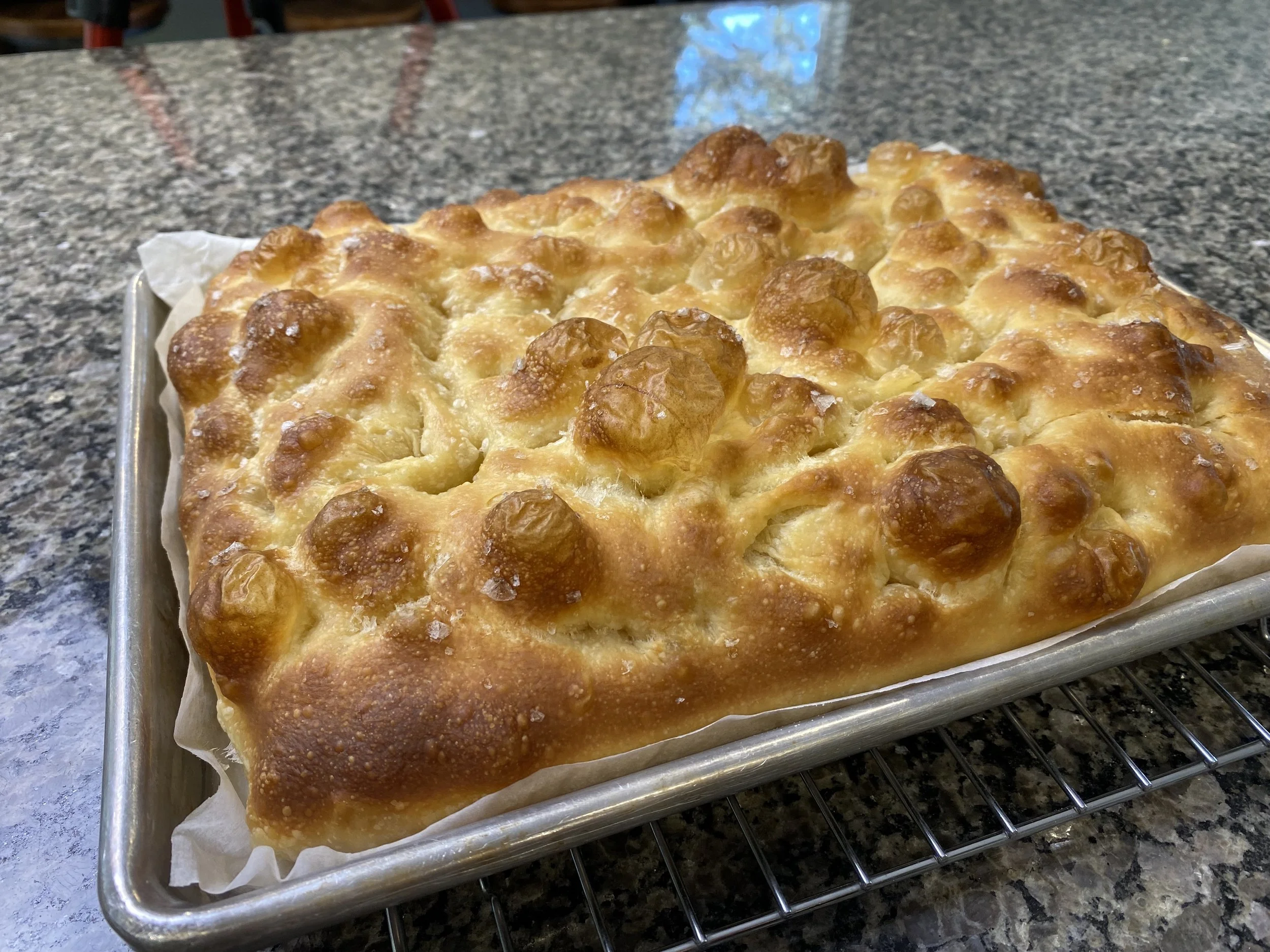







Foundational Sourdough and Easy Tray Breads
Flour * Water * Salt * Magic
vol. 2
-
Chapter 1
-
Introduction
Welcome to Flour*Water*Salt*Magic* Volume 2: Foundational Sourdough and Easy Tray Breads.
-
Essential Bread Baking Equipment List
This is a complete list of equipment that is used in this course/book. Bread baking is a simple task. You may already have many of these items.
-
Understanding Bread Recipes
This lesson is the equivalent of pulling back the curtain on the Wizard of Oz. You are about to have a clear understanding of the principles underpinning Sourdough Bread recipes. Armed with this information you will be able to dissect any bread recipe you come across and understand how to adjust it to your preferences or environment.
-
-
Chapter 2: Sourdough Starter
-
Managing your Starter
Introduction.
-
Enter the Refrigerator
Learn how to use refrigeration to slow down your Starter. This is an excellent way to take a break from Sourdough and safely store your Starter for 7-10 days. This method of managing your Starter is also great for weekend bakers.
-
The Micro Method
Shrink your Starter down with the Micro Method. Minimize discard. Get to know its behavior and life cycle to know exactly how long it takes to reach peak activity. Be ready at a moments notice to build it up for next day dough making.
-
The Daily Bread...Ad Nauseam
One of the best ways to shorten the long learning curve of Sourdough is to make bread daily. This naturally lends itself to keeping your Starter out and managing its volume by using it.
-
Feeding Ratios
Learn how to use different feeding ratios to predictably get your Starter to peak activation. Getting to know the behavior of your Starter will help you create a bread baking timeline that fits seamlessly into your life.
-
Stalling Your Starter
Temperature has a significant effect on your Starter and it is a tool that can be used to give you control over its activity level and time to peak activation.
-
Reviving Your Neglected Starter
Sometimes you put your Starter into hibernation mode in the refrigerator. Slowly it gets pushed to the back of the fridge and gets forgotten. Even if it has been neglected for 3-6 months, you can bring it back to life. This is how to do that.
-
The Sourness of Your Sourdough
How sour do you want your Sourdough? Learn how to adjust the volume on the sourness of your bread.
-
The Float Test
A quick side bar to address the Float Test. Does your Starter need to Float?
-
-
Chapter 3: Sourdough Foundations
-
The Do-it-All Dough
The Do-it-All Dough will be the foundation of your Sourdough baking life. In this section we will cover Mixing Dough, The 4 Stretch & Folds, and Bulk Fermentation. You will use this Dough Recipe for all of the variations in this course/book. It truly is one dough to do it all.
-
Sourdough Oval/Batard
You will learn how to Shape, Cold Proof, Score, Bake, Cool, and Slice a Sourdough Oval/Batard.
-
Sourdough Round
How to do Shaping, Cold proofing, Scoring, Baking, Cooling, and Slicing for a Sourdough Round.
-
Sourdough Sandwich Bread
Use the Do-it-All Dough to make Sourdough Sandwich Bread. This is a great same-day project. Learn how to Shape, Final Proof/Rise, Bake, Cool, and Slice.
-
-
Chapter 4: Easy Tray Breads
-
Sourdough Sandwich Buns
Sourdough Sandwich Buns are a great same day bread that requires minimal equipment. They have a thin crsip crust and a light fluffy texture. Learn the math behind calculating how much dough to make. You are using the Do-it-All Dough for this Sourdough variation. Learn how to Shape, Final Proof, and Bake these Sandwich Buns in this section.
-
Sourdough Pull-Apart Rolls
Learn how to Portion, Shape, Final Proof, Bake, and Serve Sourdough Pull-Apart Rolls. This is a great same-day bread project and another easy tray bread. Pull-Apart Rolls have a nice balance of crisp crust and soft crumb/fluffy interior texture.
-
Sourdough Focaccia
Up to this point you have used the Do-it-All Dough for all of the Sourdough variations. In this Focaccia recipe the Do-it-All Dough is the foundation, but with the addition of olive oil, you will get to have a very different experience. Consider this a simple progression in your dough handling skills. This Focaccia has a light crisp crust and a fluffy crumb/interior texture.
-
-
Chapter 5: A Little More Depth
-
How to Serve Sourdough Bread to the Table
This is a pretty self explanatory title. Learn how to take a big beautiful Round or Oval and bring it to the table sliced, toasted, and warmed through.
-
Stretching The Dough
We have been through this in the Do-it-All Dough lesson, but here are a few more tips and thoughts on the Stretch & Fold process.
-
Adding Other Flours To A Recipe
Learn how to use the Do-it-All Dough to make Whole Grain or Multi-grain Sourdough Bread. By replacing a percentage of your Bread Flour with a Whole Grain or a blend of Whole Grain Flours, you can produce some excellent Sourdough variations. This is a fun and easy way to experiment and customize your bread.
-
Inclusions...For Endless Variety
Learn how to add other ingredients to the Do-it-All Dough. The neutral flavor profile of the Do-it-All dough makes it possible to incorporate savory or sweet inclusions. Follow the 9 guidelines and use your creativity to create endless varieties of bread.
-
A Dough Whisk...Is It A Good Tool?
Sourdough Baking requires very simple tools. This is an inexpensive tool that I have come to really appreciate. Find out why.
-
The Overnight Dough Method
This is an alternative timeline to help you see a different way to fit sourdough bread into your life. Your environment will play a significant role with this method.
-
Autolyse...The Truth.
There are many polarizing topics in the world like politics and religion. In the world of Sourdough Autolyse is a polarizing topic. Is it necessary? Can it be skipped? Here are some possibilities.
-
8-48 hours...or maybe not.
Generally, a Sourdough Oval or Round is cold proofed in a banneton for 8-48 hours prior to baking. But, what if you want a Sourdough Oval or Round tonight? Learn how to bend the rules to produce a beautiful Round or Oval as a same-day bread.
-
-
Chapter 6: Macro Concepts
-
Jar Maintenance
How often do you need to change out the jar your Starter lives in? How do you keep the jar clean and are Mason jars the best choice?
-
What About The "Slap & Fold" Technique?
There are many ways to develop the elasticity of your dough. Here are some reasons why the airborne Stretch & Fold is my go-to method.
-
All Flour Is Not Created Equal
Just a few thoughts on flour.
-
Measuring Basics
Measuring in grams is important to a consistent result. Here are a few tips regarding a digital scale.
-
Every Oven Is Different
There are many variables in Sourdough baking, including your oven. Is it 27” or 30”? Is the heating element in the back or the bottom. Is it gas or electric? All of these factors will effect how you bake bread. Let’s address some of these variables.
-
Clean Tools
Your Sourdough Starter is full of microbes, bacteria, and yeast. It is a living breathing organism. Good sanitation is important to maintaining a healthy population of microbes.
-
Water and Environment
There are only two ingredients in your Soudough Starter. Flour and Water. The quality of your water can have a huge impact on the behavior of your Starter and Dough. You environment can also provide you with some challenges. When you understand your environment you can make the necessary adjustments along the way.
-
Night Bread
Making a beautiful loaf of Sourdough Bread the main course. There is a time and a place for everything.
-
Thank you!
-

